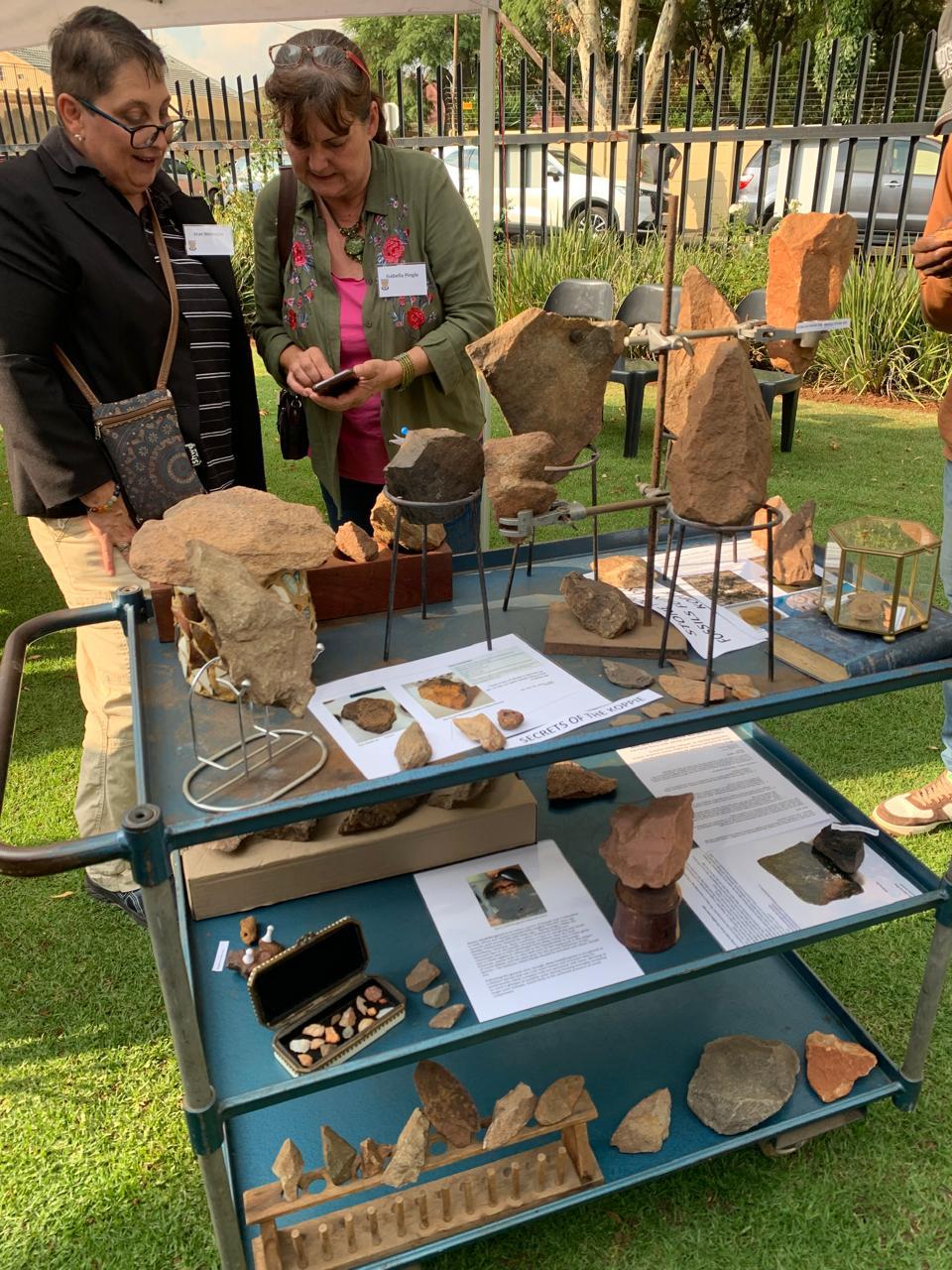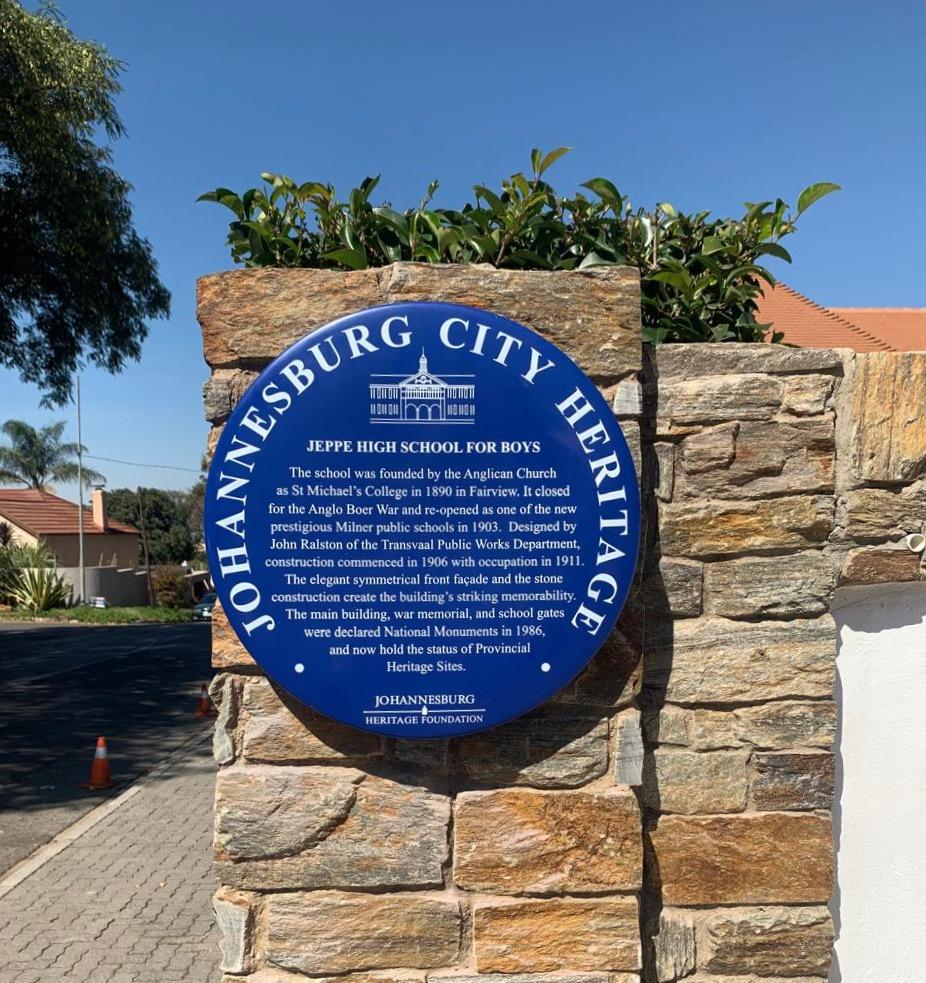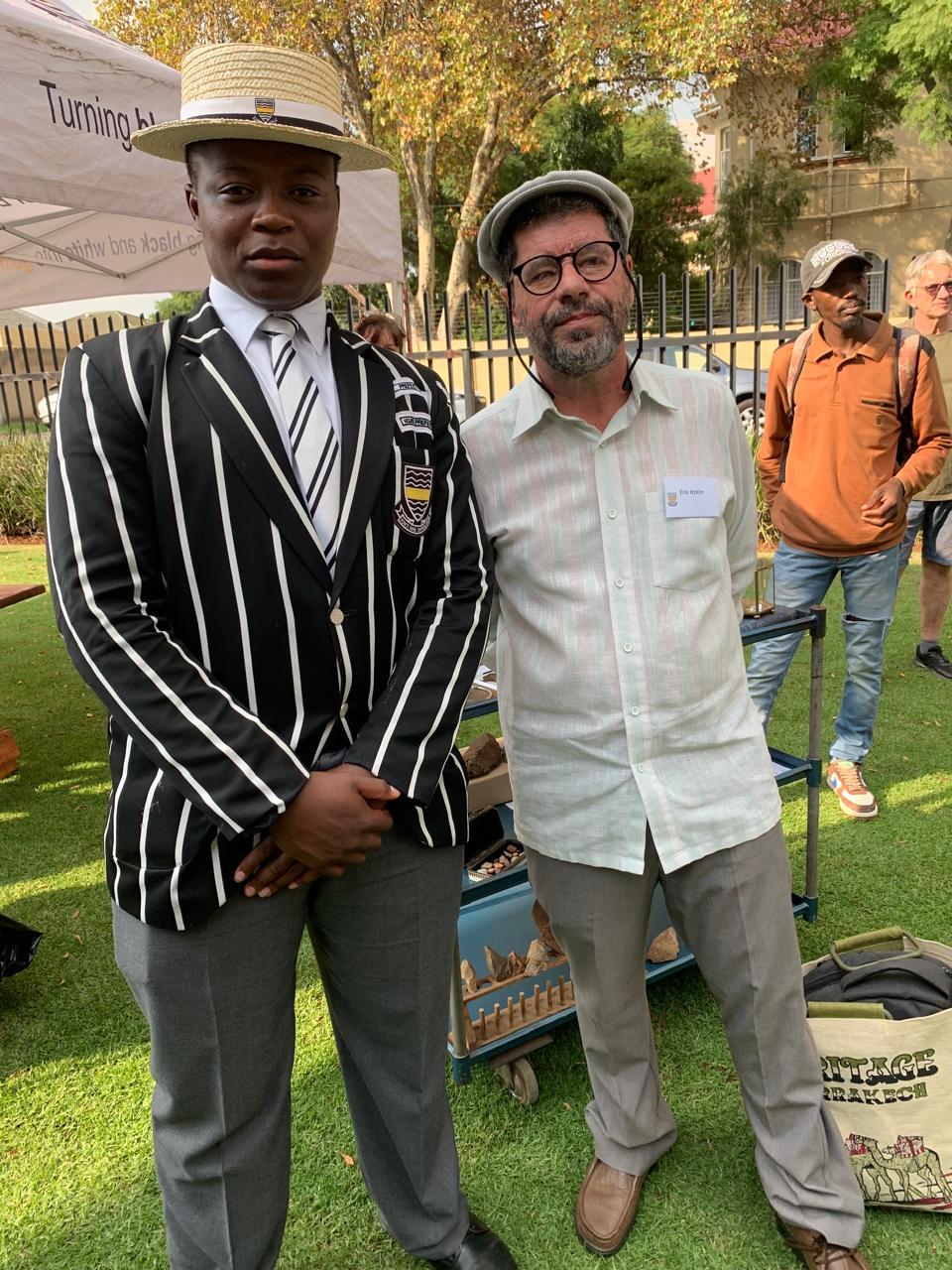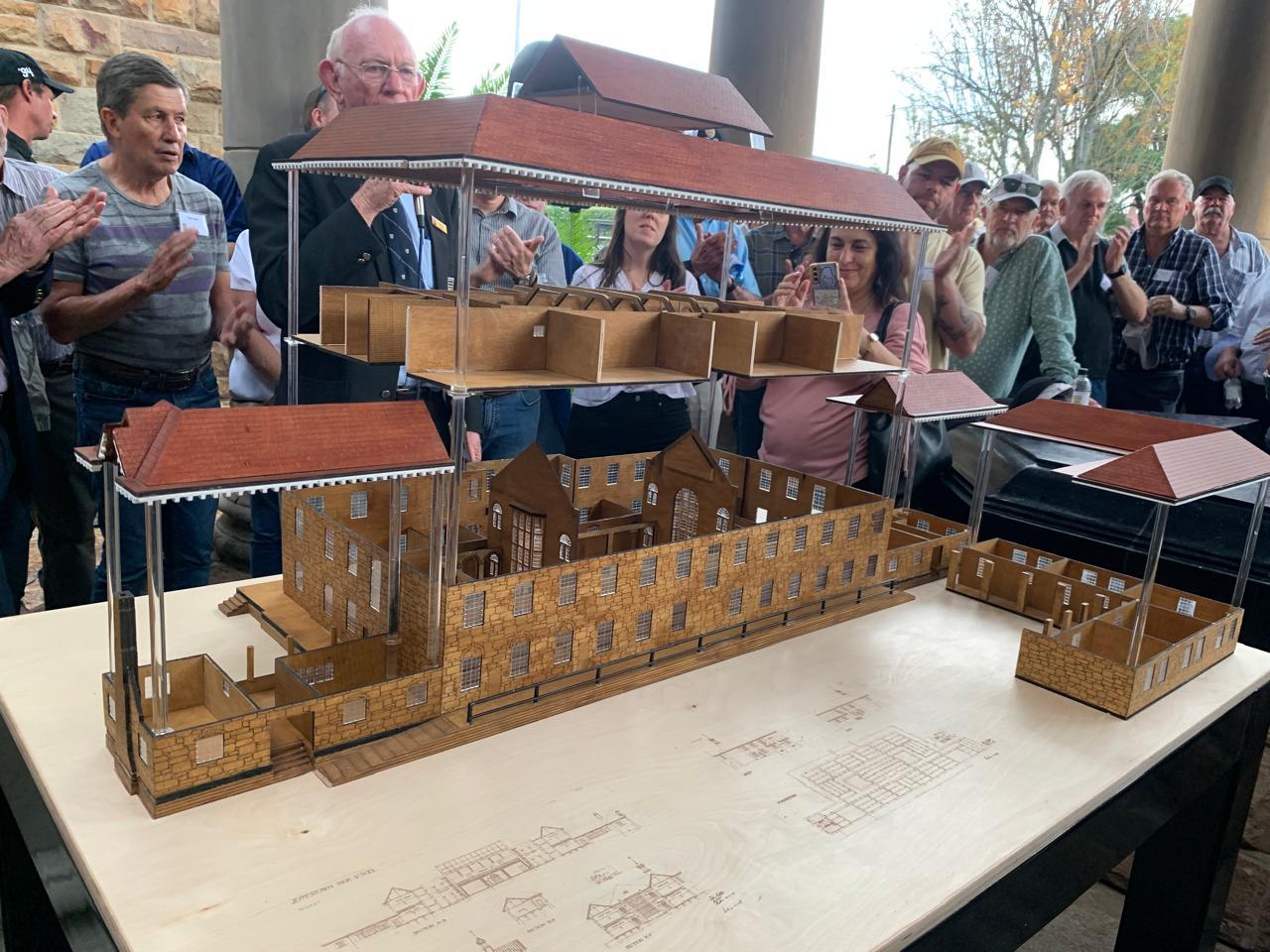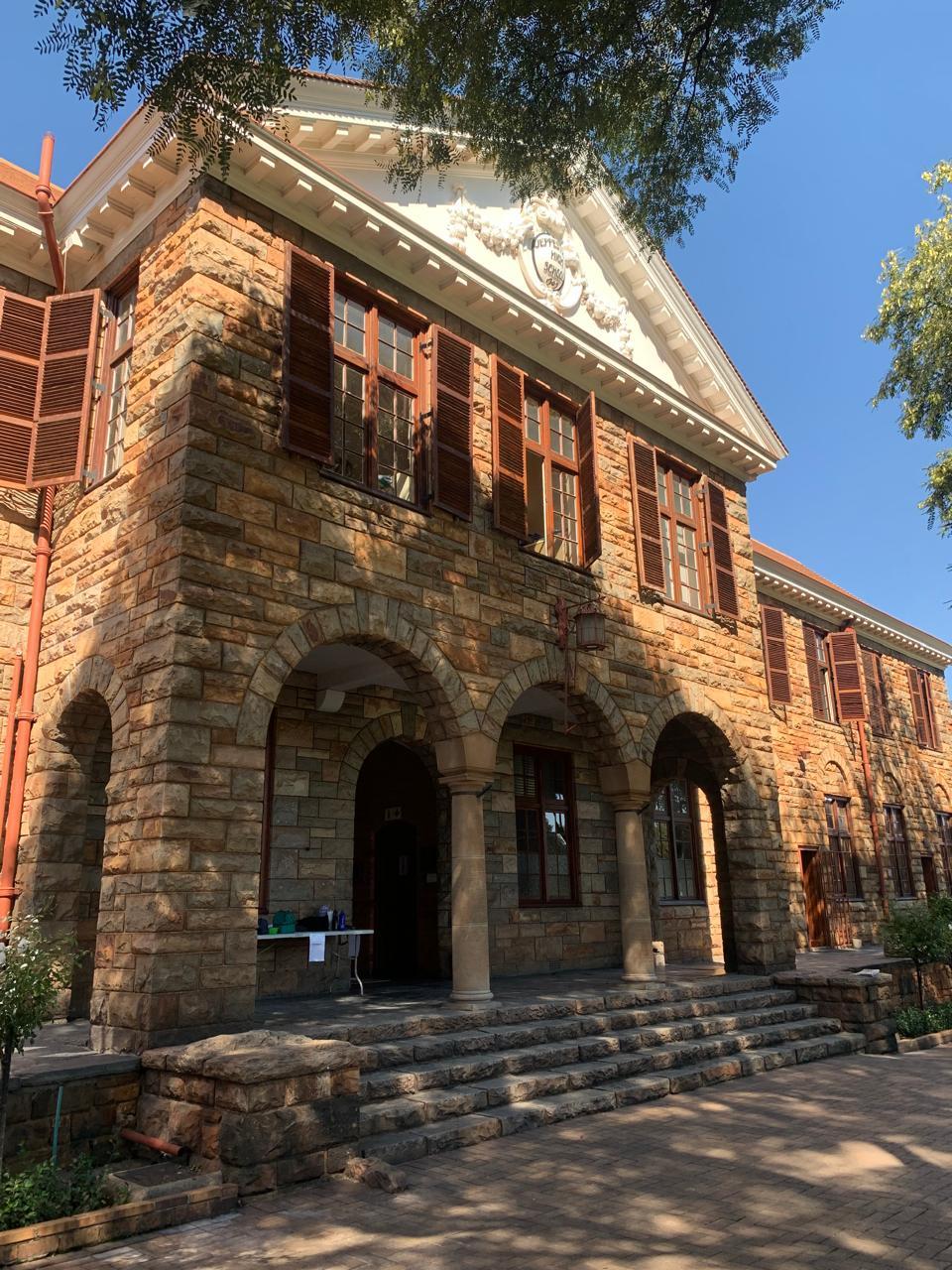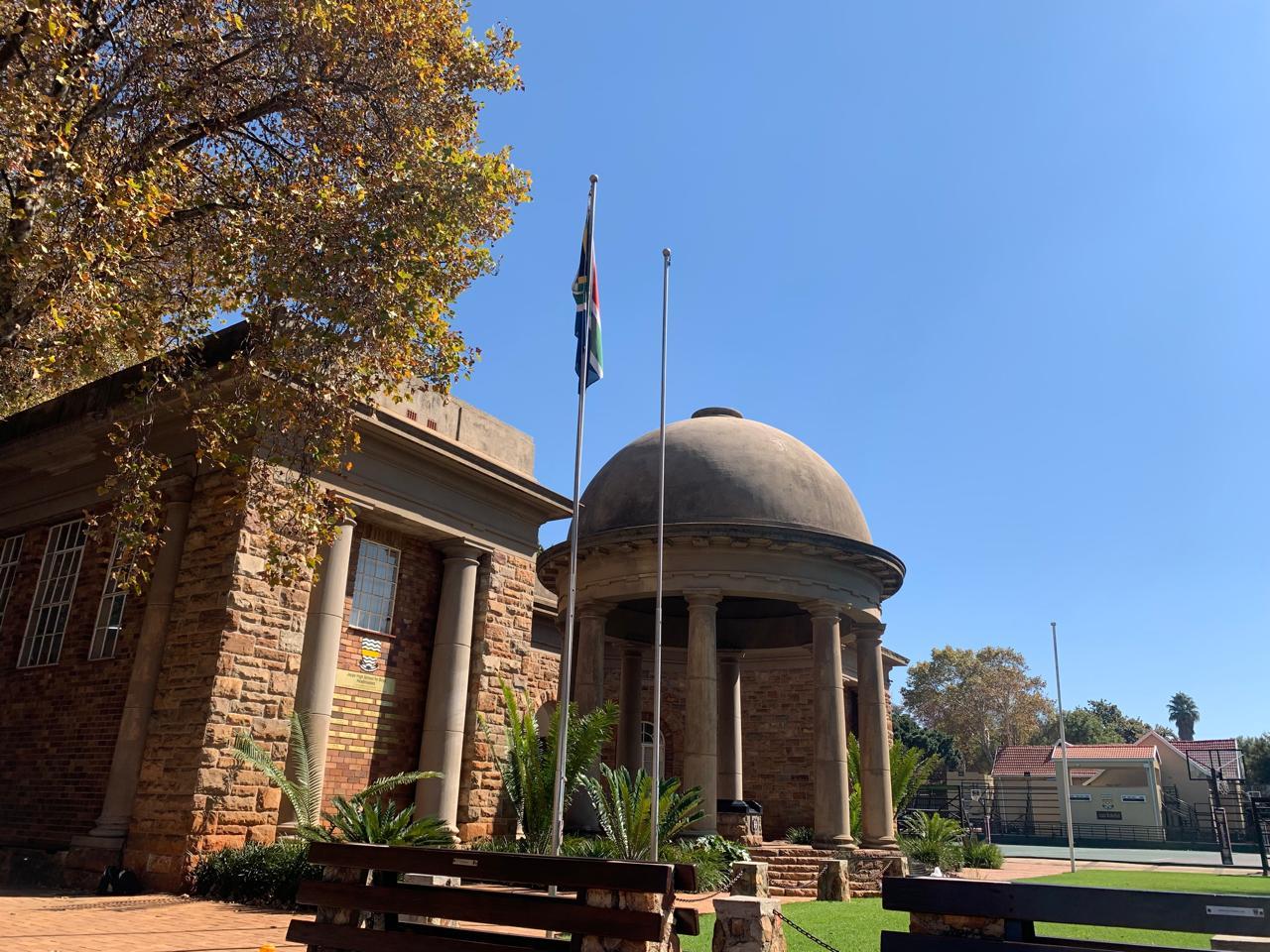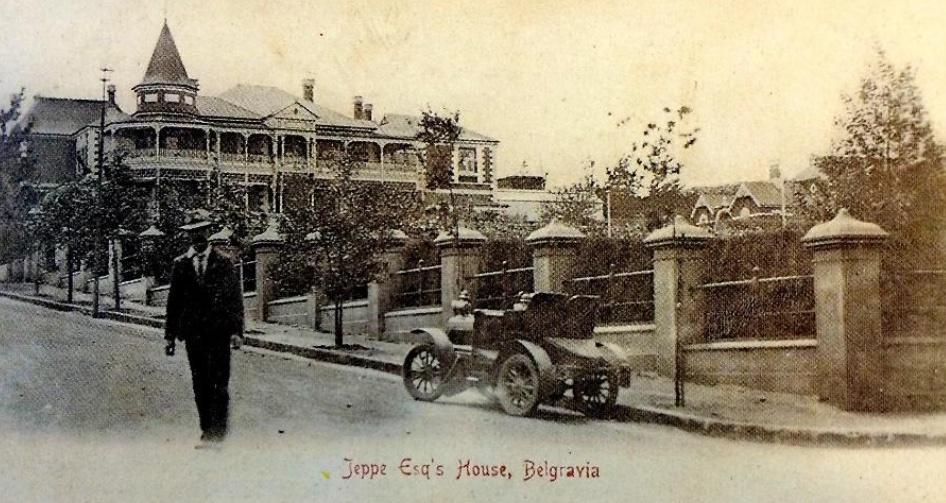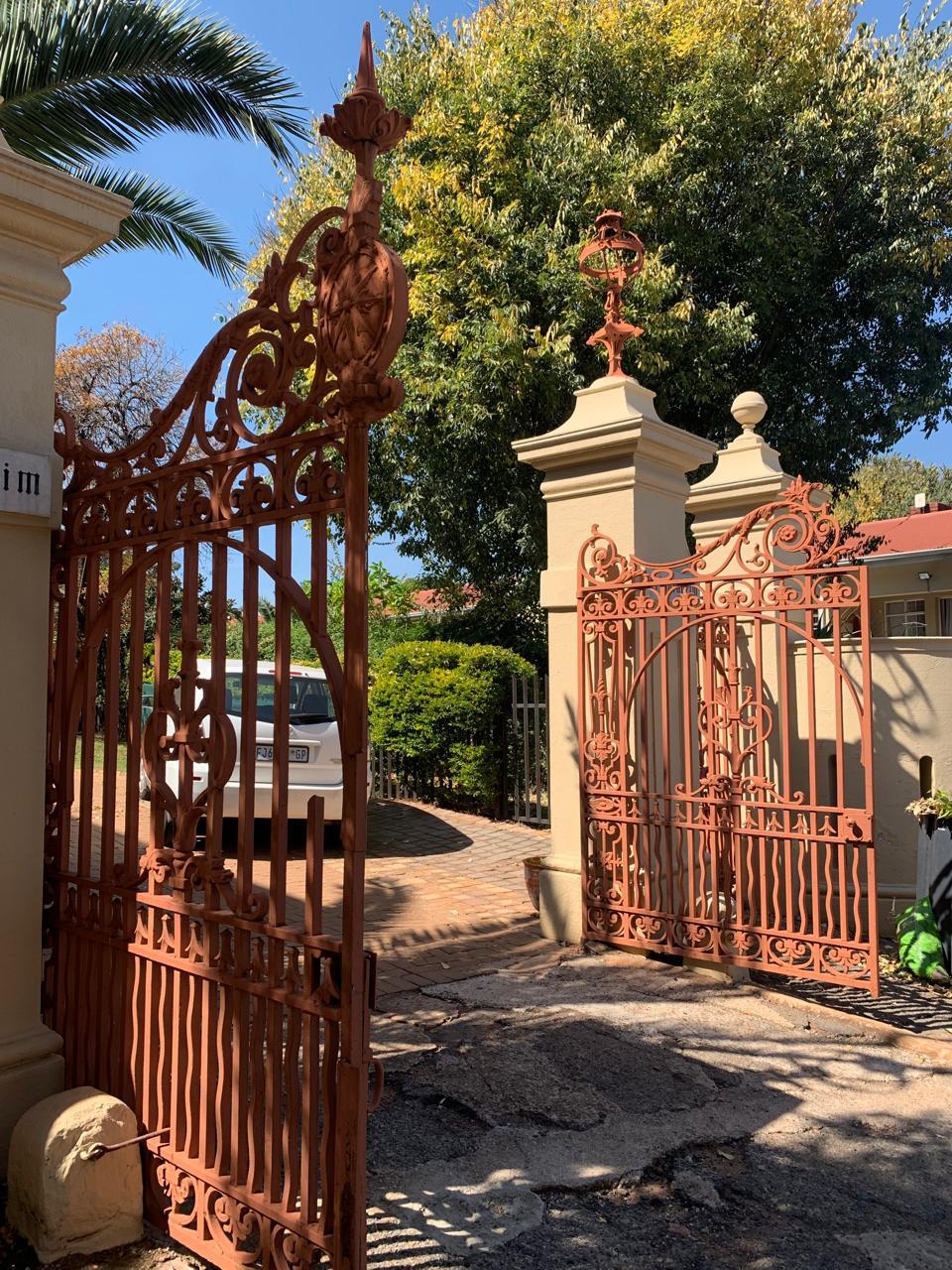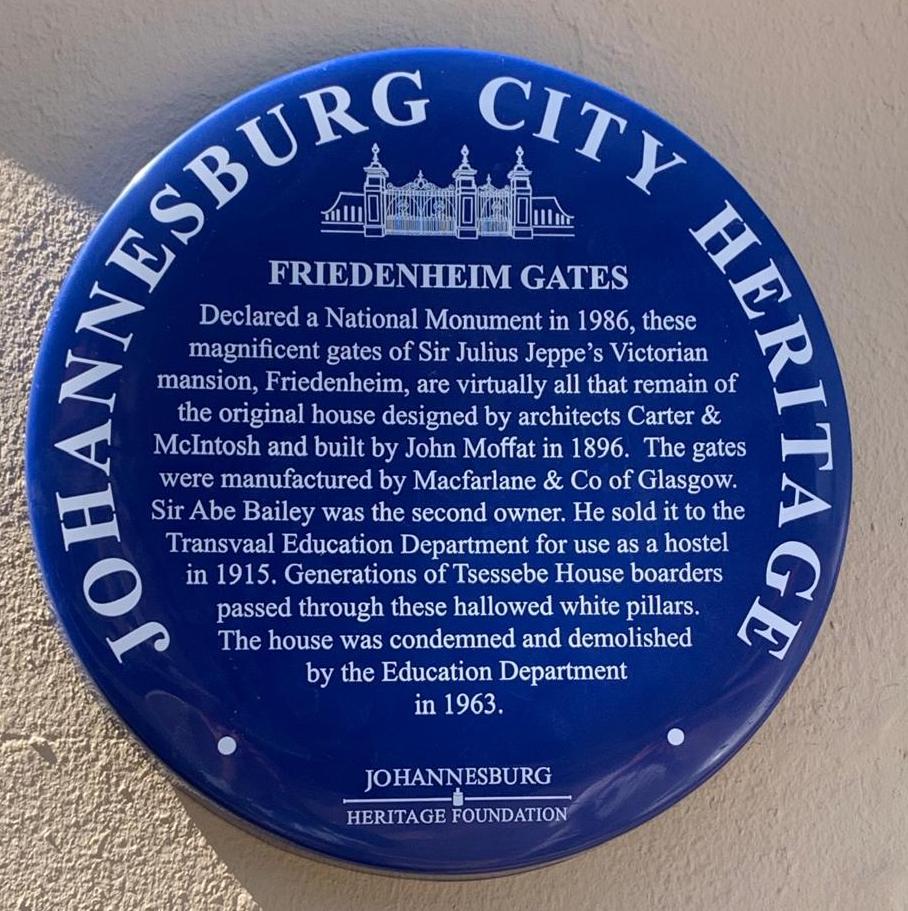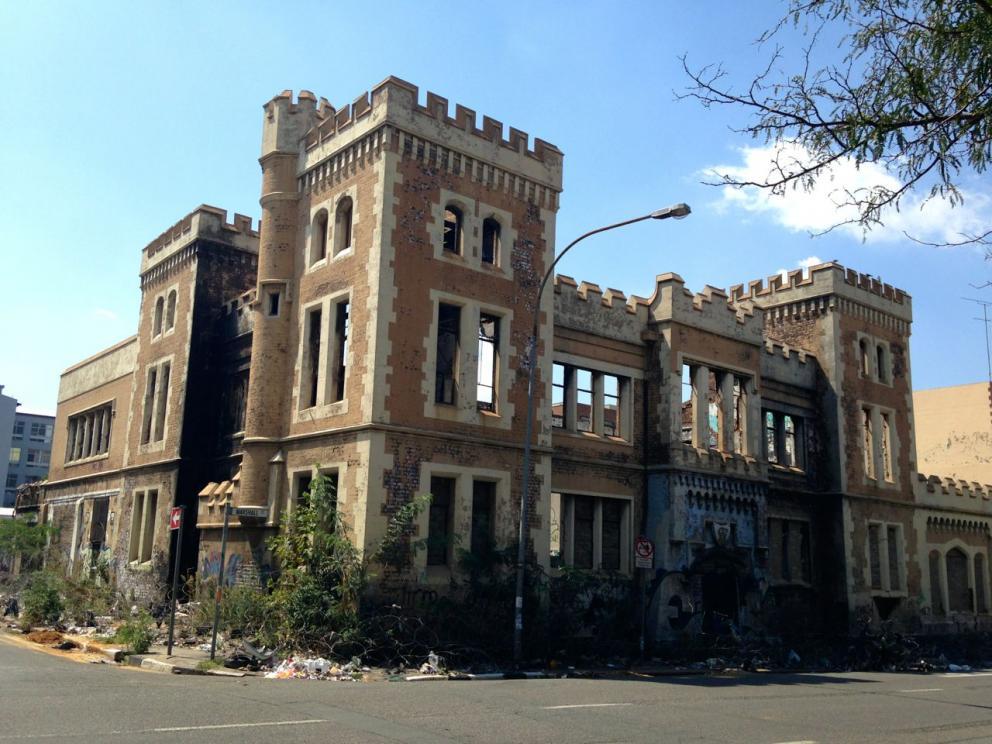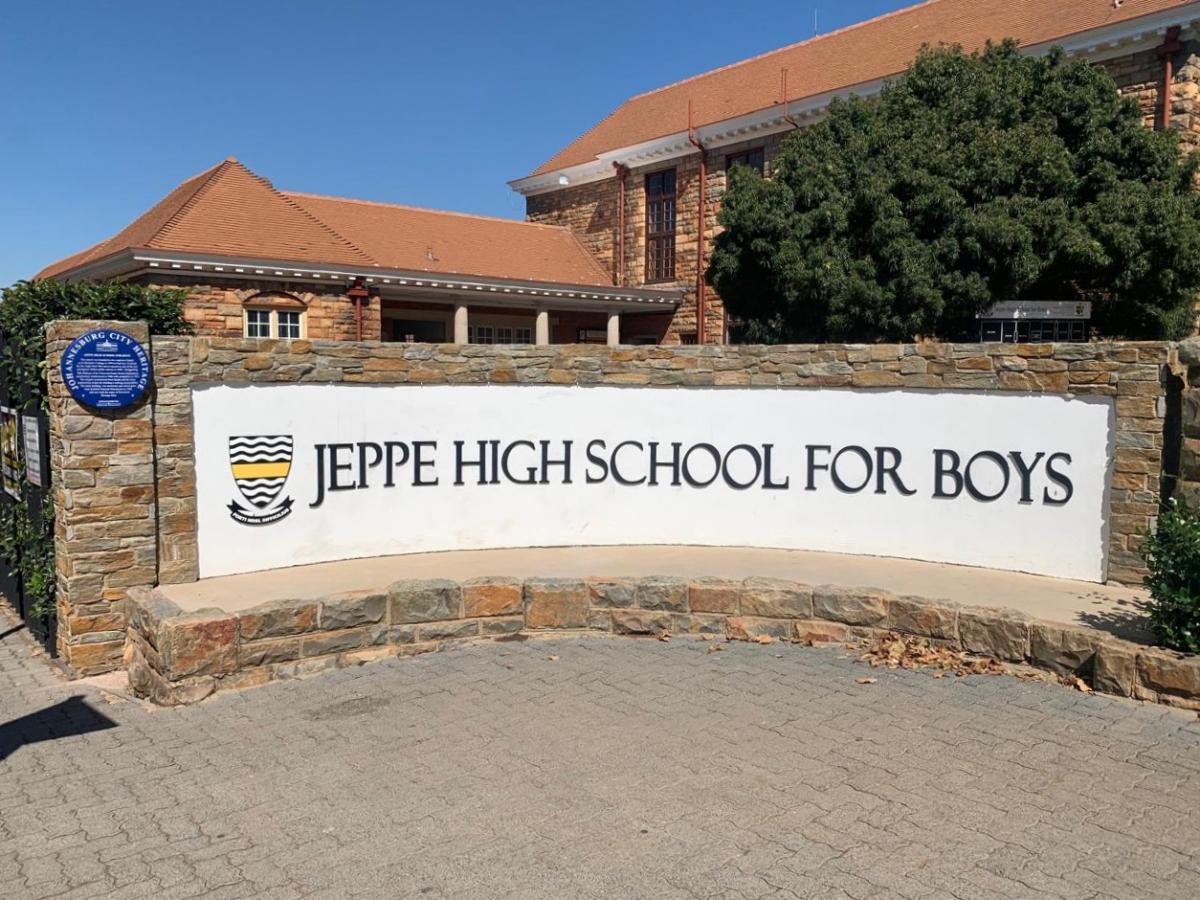
Disclaimer: Any views expressed by individuals and organisations are their own and do not in any way represent the views of The Heritage Portal. If you find any mistakes or historical inaccuracies, please contact the editor.
On Friday 26th April, Jeppe High School for Boys in Kensington celebrated its heritage with the unveiling of two blue plaques and a superbly developed heritage route. They hosted a homecoming reunion celebration for old boys of the school (for all boys who had matriculated in the years ending with a '4'). The jubilee weekend also showed off student rugby at its best with a series of top games between Jeppe and King Edward VII School in matches hosted on Jeppe’s rugby fields. Beautifully attired young men in boaters and smart black and white blazers were the hosts to escort guests around the school. Good manners, raised hats and authentic smiles are the mark of the Jeppe boys, soon to step out into the world as Jeppe men.
Jeppe Boys as well as Jeppe Girls (also situated on Roberts Avenue) Kensington are both schools proud of their heritage and history. Both have produced fine school histories and both schools now have blue plaques.
Jeppe Koppie archaeological finds on display
There was a marvellous display of early archaeological / prehistoric finds of stone hand tools. These were examples of tools and implements of unknown people who must have inhabited the Jeppe koppie tens of thousands of years ago. It has been a painstaking task for Mrs Jean Meintjes, one of the school’s administrative staff members, to gather, study and catalogue these finds but there is rich enthusiasm and a considerable display of knowledge in evidence. It certainly made me want to explore the koppie in person! Mrs Meintjes is also the author of the Jeppe History blog.
Finds on display (Kathy Munro)
Partnership of Jeppe, the City and Johannesburg Heritage
The event was organized by Kevin Tait, former Headmaster of Jeppe from 1997 to 2007, in his capacity as the Chairperson of the Jeppe Heritage Experience Project Team. Kevin partnered with the Johannesburg Heritage Foundation in commissioning the two plaques. The City of Johannesburg concurred with the award of the status of 'Johannesburg City Heritage'. A new blue plaque was unveiled at the main entrance on Good Hope Street, Kensington and splendidly welcomes all to the school.
Blue Plaque (Kathy Munro)
Eric Itzkin, Deputy Director Immovable Heritage, represented the City at the event and the principal plaque at the gate was unveiled by Kathy Munro of the Johannesburg Heritage Foundation and Derek Cooper, Jeppe Old Boy and former Chairman of Standard Bank.
Eric Itzkin represented the City of Johannesburg (Kathy Munro)
At the War Memorial Lawn, the headmaster, Dale Jackson, offered a warm welcome to all and a superb model of the Jeppe school was presented by its architectural modeller De Wet Potgieter.
Model of Jeppe School (Kathy Munro)
Early history of Jeppe Boys
Jeppe High School for Boys, situated in Kensington, is one of the oldest Johannesburg schools. Its history goes back to 1890 when the school was established by the Anglican Church as St Michael’s College in Fairview. The late 1890s, with the coming of the Anglo Boer War, was a troublesome and difficult time when many Johannesburg people who were “uitlanders” or outsiders were displaced and forced to flee the city. The school closed during those dark war years. Jeppe reopened after the war in 1903 as one of the prestigious Milner schools in the post war educational reform period – the objective was to offer quality English language education to young men and women (and inculcate support for Empire and British ambitions). An extensive building programme was embarked on by the Transvaal Colony’s Public Works Department, and the architect John Ralston designed the principal building of the school. Construction commenced in 1906 with occupation in 1911.
The first blue plaque has been positioned at the Dickie Fritz Main gates to Jeppe on Good Hope Street (see main image). These gates honour the memory of two Jeppe High School masters, Dickie Dashwood and Fritz von Linsingen. As soldiers in the Second World War, they served in the Imperial Light Horse Regiment and were both killed on 31 December 1941 in the Battle of Bardia, in the North African Campaign. In 2018 the Australian old boys of Jeppe refurbished the gates and funded the new entrance to Jeppe. It adds up to a wonderful example of comradeship, memory and traditions that stretch from Johannesburg around the world.
The elegant symmetrical front façade and the chamfered stone used as the building blocks create the building’s striking memorability. In addition, the school has a fine war memorial to remember the men who lost their lives when South Africans enlisted to fight in the First World War as members of the British empire and volunteered to fight for “King and Country.” Later came the losses of the Second World War and these men who fought mainly in North Africa and Italy as part of the endeavour to defeat Hitler’s Germany and its allies are also commemorated in a separate Memorial Hall.
The main building, the war memorial and the school gates were awarded National Monument recognition in 1986 but with changes in the legislation after 1994, today hold the status of Gauteng Provincial Heritage Sites.
Elegant front façade (Kathy Munro)
Jeppe War Memorial (Kathy Munro)
The Friedenheim Gates and House
A second blue plaque was unveiled at the Friedenheim Gates. These fine wrought iron gates were once the impressive entrance gates to the mansion of Sir Julius Jeppe’s late Victorian Home, Friedenheim. The original house, erected in 1896 was designed by the then well-known early Johannesburg architects, Carter and McIntosh.
Old postcard of Friedenheim
Friedenheim Gates (Kathy Munro)
Blue Plaque (Kathy Munro)
Carter and McIntosh were prominent in the 1890s and were the architects of several significant buildings, long since demolished, such as the Natal Bank Building at 90 Market Street, and the Corporation Building. One of their buildings that remains but is in derelict and disgraceful condition is the Three Castles Cigarette Company building in Marshall Street.
Three Castles Building (The Heritage Portal)
The house is in Robinson Street, Belgravia and was the home of Sir Julius Jeppe, the Johannesburg property developer. Jeppe lived in his new house for a relatively short period of time in the 1890s. Ownership later passed to Sir Abe Bailey, another mining man, entrepreneur and property tycoon, who it is said acquired the mansion from Sir Julius to settle a gambling debt. But that could be an apocryphal story! Bailey sold the house to the Transvaal Education Department in 1915 and it became a hostel. Generations of boarders passed through these grand art nouveau style tendril twisted gates and their white hallowed pillars.
Remarkably the gates were imported from Scotland and were manufactured by the iron manufacturer, Macfarlane of Glasgow (they would have been produced at the Saracen Foundry). Examples of this imported iron work - fountains, gazebos, streetlights, public urinals, fencing, balcony railings, decorative iron work - used to be seen all over Johannesburg and then, in a flush of modernization, iron became unfashionable and disappeared from our cityscape. They dated from a time well before the South African iron industry was established. Sadly, the mansion Friedenheim was condemned by the Transvaal Education Department and demolished in 1963.
Heritage route
A superb feature of the afternoon was the unveiling of a heritage route for the school. Organized by Kevin Tait, it has free standing banners positioned at each landmark spot. The route covers twelve key heritage landmarks: the War Memorial, Centenary House, Oribi House, the Koppie, Summer House, the Stables, Tsessebe House, Droste House, Thabana House, the Innovation Hub and Retaining Wall, the Memorial Hall, and Payne Hall. Each heritage treasure has a number matched to a map.
Interpretation panel for Droste House (Kathy Munro)
The Johannesburg Heritage Foundation will plan future tours along this heritage route.
Kathy Munro is an Honorary Associate Professor in the School of Architecture and Planning at the University of the Witwatersrand. She enjoyed a long career as an academic and in management at Wits University. She trained as an economic historian. She is an enthusiastic book person and has built her own somewhat eclectic book collection over 40 years. Her interests cover Africana, Johannesburg history, history, art history, travel, business and banking histories. She researches and writes on historical architecture and heritage matters. She is a member of the Board of the Johannesburg Heritage Foundation and is a docent at the Wits Arts Museum. She is currently working on a couple of projects on Johannesburg architects and is researching South African architects, war cemeteries and memorials. Kathy is a member of the online book community the Library thing and recommends this cataloging website and worldwide network as a book lover's haven. She is also the Chairperson of HASA.
Comments will load below. If for any reason none appear click here for some troubleshooting tips. If you would like to post a comment and need instructions click here.

